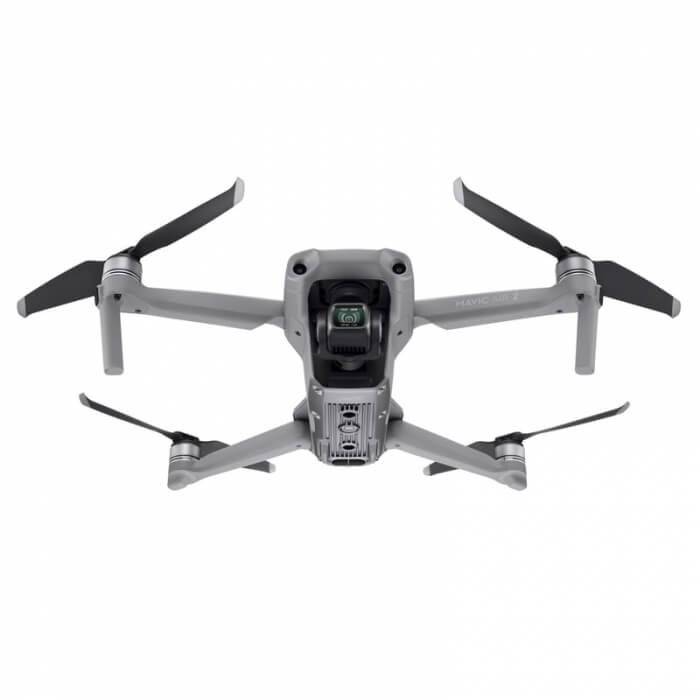Thoracic Disc Syndrome is a cluster of pain and neurologic problems that arise when one or more intervertebral discs between T1 and T12 deteriorate, bulge, tear, or herniate and begin to irritate the spinal cord, thoracic nerve roots, or surrounding pain-sensitive tissues. Although less common than cervical or lumbar disc disease, TDS can be every bit as disabling because the thoracic canal is narrow and leaves little “spare room” for a displaced disc fragment. Typical clinical pictures range from a dull mid-back ache to frank myelopathy with leg weakness, gait disturbance, and band-like chest or abdominal pain. Risk climbs after about age 40 and peaks in the fifth and sixth decades. PhysioPediaNCBI
Thoracic discs fail for three broad reasons: degenerative aging, acute or repetitive mechanical overload, and metabolic–inflammatory influences that undermine disc nutrition. The ensuing biochemical cascade—loss of water-binding proteoglycans, annular fissuring, nuclear pressurization, and nuclear extrusion—turns a normally flexible fibrocartilaginous pad into an inflamed, space-occupying lesion that can compress the spinal cord, vascular structures, or thoracic nerve roots. Barrow Neurological Institute
Major types of thoracic disc pathology
Degenerative thoracic disc disease
A slow, wear-and-tear loss of disc height, hydration, and elasticity. Weakening annular rings develop concentric and radial tears through which chemical mediators leak, sensitising the sinuvertebral nerve endings and producing mid-back pain that worsens with sitting and improves when prone. NCBI
Contained disc protrusion
Here the nucleus pulposus pushes the intact annulus outward. The bulge deforms the epidural space but remains tethered to its parent disc. Symptoms are mostly mechanical—deep, dull pain that spikes on thoracic flexion and coughing. Verywell Health
Extruded (sub-ligamentous) herniation
A full-thickness annular tear allows nucleus to escape under the posterior longitudinal ligament, forming a “teat-drop” mass that indents the cord. Neurologic signs (sensory band, spastic gait) appear earlier than in protrusion. Verywell Health
Sequestered (free fragment) herniation
The disc fragment breaks completely loose and may migrate cranially or caudally. Migration inside the canal can mimic tumours or epidural abscess and often needs urgent decompression. Verywell Health
Calcified thoracic disc
Long-standing degeneration may draw in calcium salts; the resulting bony hard mass resists conservative therapy and complicates surgery because it adheres to dura. Calcification is particularly common below T8. UCLA Health
Traumatic annular–end-plate injury
High-energy flexion-rotation (falls, road accidents) can split the annulus and shear the cartilaginous end-plate. Acute pain appears immediately; disc extrusion often develops months later if the tear fails to heal. Barrow Neurological Institute
Common causes of TDS
-
Age-related degeneration — With advancing age, the nucleus dries out, loses height, and cannot absorb shock. Facet joints then receive abnormal loads, accelerating disc and osteophyte formation. Spine-health
-
Cumulative axial loading — Repetitive bending, lifting, or vibration (e.g., heavy-machinery operators) imposes micro-trauma that exceeds the disc’s self-repair capacity, hastening annular fissuring.
-
Poor posture — Prolonged forward head and slouched seating shift centre-of-gravity anteriorly, raising intradiscal pressure in the mid-thoracic segments, especially T7–T9 in office workers.
-
Osteoporotic vertebral wedging — Compression fractures alter local biomechanics; neighbouring discs buckle asymmetrically and degenerate.
-
High-impact trauma — Sudden deceleration or sports collisions can rupture annular fibres outright, forcing nucleus posteriorly. Barrow Neurological Institute
-
Contact sports hyperflexion — Gymnastics, wrestling, and rowing require aggressive thoracic flexion-rotation, predisposing to disc tearing over time.
-
Smoking — Nicotine vasoconstriction and carbon-monoxide-induced hypoxia starve end-plate capillaries, reducing nutrient diffusion into discs.
-
Obesity — Excess mass increases axial load while pro-inflammatory adipokines accelerate matrix breakdown.
-
Genetic polymorphisms — Variants in COL9A2, MMP3, and aggrecan genes weaken collagen cross-linking, making discs prone to early failure.
-
Occupational lifting — Nurses, warehouse workers, and farmers experience repeated stoop-twist moves, cumulatively stressing thoracic discs.
-
Whole-body vibration — Professional drivers experience chronic micro-impact that hastens nucleus pulposus pressurisation.
-
Inflammatory spondyloarthropathy — Conditions such as ankylosing spondylitis inflame end-plates and encourage syndesmophyte bridging, altering disc mechanics.
-
Diabetes mellitus — Microangiopathy and advanced glycation end products stiffen disc collagen, undermining tensile strength.
-
Disc infection (discitis) — Bacterial or fungal infiltration triggers enzymatic breakdown, rapid loss of turgor, and collapse.
-
Congenital scoliosis/kyphosis — Abnormal curvature concentrates load on the concave side, precipitating asymmetric disc disease.
-
Adjacent segment disease post-fusion — Thoracic motion transfers to mobile levels above a fused segment, fatiguing their discs.
-
Chronic corticosteroid use — Steroids weaken collagen and speed osteoporosis, indirectly undermining disc architecture.
-
Vitamin D and calcium deficit — Poor bone-disc complex mineralisation predisposes to Schmorl node intrusions that destabilise discs.
-
Neoplastic infiltration — Primary spinal tumours or metastasis can erode vertebral bodies, destabilising adjacent discs and ligaments.
-
Muscle deconditioning — Weak paraspinals fail to share load, leaving discs to absorb every shock, accelerating wear.
Symptoms
-
Localized mid-back ache — A constant, dull pain centred between the scapulae that worsens with prolonged sitting and often feels like “a tight knot.”
-
Thoracic radicular pain — Sharp, band-like discomfort wrapping around the rib cage following a dermatomal path (T5–T8 most typical), aggravated by coughing or sneezing.
-
Anterior chest wall pain — Aching just lateral to the sternum can mimic cardiac or reflux disorders; it typically intensifies during trunk rotation.
-
Inter-scapular burning — A fiery sensation under one shoulder blade produced by nerve-root irritation.
-
Truncal numbness — Patches of reduced skin sensation or a “cotton-wool” feel across the abdomen or back.
-
Distal paraesthesias — Pins-and-needles in thighs or feet when cord compression ascends above T10.
-
Lower-limb weakness — Corticospinal tract impingement yields heaviness or buckling knees, especially noticeable on stairs.
-
Broad-based gait — Myelopathic patients adopt a wide stance to maintain balance, sometimes described as “walking on marshmallows.”
-
Muscle spasticity — Hyper-excitable stretch reflexes cause leg stiffness and clonus.
-
“Tight band” sensation — Patients describe a corset-like grip around the torso hinting at dorsal column irritation.
-
Postural instability — Uneasy balance when eyes are closed (positive Romberg) reflecting proprioceptive pathway compromise.
-
Hyperreflexia — Brisk patellar and Achilles reflexes signal upper-motor-neuron disturbance at or above the lesion.
-
Bowel dysfunction — Constipation or urgency emerges as autonomic fibres travelling in the cord become compressed.
-
Bladder urgency/retention — Detrusor hyper-reflexia or sphincter dyssynergia develops in more advanced cord compression.
-
Reduced sexual function — Both men and women report decreased genital sensation or arousal due to disrupted thoracolumbar sympathetic pathways.
-
Activity-related flare-ups — Lifting arms overhead or trunk rotation drives up intradiscal pressure and provokes stabbing pain.
-
Pain relief when supine — Horizontal rest momentarily reduces axial load and venous congestion around the nerve roots.
-
Night pain — Deep ache that wakes the patient after several hours, possibly from venous engorgement and cytokine accumulation.
-
Restricted thoracic expansion — Painful stiffness limits deep inspiration, resulting in shallow breathing patterns.
-
Reactive muscle guarding — Paraspinal muscles tighten reflexively around the affected segment, producing palpable “ropey” bands.
Diagnostic tests
A. Physical examination tools
-
Inspection & palpation — Observe kyphosis, scapular symmetry, and palpate for tenderness or step-offs that indicate segmental instability.
-
Active range of motion — Painful limitation in thoracic flexion, extension, or rotation suggests discogenic triggers; flexion often increases ache.
-
Dermatomal sensory mapping — Light-touch or pin-prick deficits in a circumferential band corroborate a compressive root lesion.
-
Myotome strength testing — Manual resistance testing of abdominal wall and lower-limb muscles detects subtle cord-level weakness.
-
Deep tendon reflexes — Brisk patellar/Achilles and positive Babinski point toward upper-motor-neuron involvement.
-
Gait & balance assessment — Tandem walking and Romberg reveal myelopathic ataxia; subtle unsteadiness may be first sign.
B. Manual provocation tests
-
Thoracic slump test — Sequential flexion of neck, trunk, and legs stretches the cord; reproduction of pain implies neural tension or disc bulge.
-
Rib springing — Posterior–anterior pressure on ribs stresses the costovertebral joints; discogenic pain is usually mid-line rather than costal.
-
Intervertebral provocation (P-A pressure) — Firm pressure over spinous processes elicits segment-specific pain.
-
Prone press-up — Passive extension narrows the posterior disc border; radicular pain suggests protrusion.
-
Thoracic extension–rotation test — Combines axial rotation with extension while seated; pain hints at posterior column or disc lesion.
-
Upper nerve-root compression test — Lateral flexion-rotation narrows neural foramina, reproducing radicular symptoms in upper thoracic levels.
C. Laboratory & pathology
-
Complete blood count (CBC) — Elevated white cells plus fever prompt suspicion of discitis or epidural abscess, not simple degeneration.
-
Erythrocyte sedimentation rate/C-reactive protein — High ESR/CRP confirm inflammatory or infectious processes.
-
HLA-B27 typing — Positive result supports an ankylosing spondylitis–related thoracic disc syndrome.
-
Image-guided disc biopsy — Samples annular tissue for organisms or neoplastic cells when infection or tumour is suspected.
D. Electrodiagnostic studies
-
Nerve conduction study (NCS) — Quantifies sensory and motor conduction; normal results help exclude peripheral neuropathy when radicular pain is vague. Wikipedia
-
Needle electromyography (EMG) — Detects denervation in paraspinal and abdominal wall muscles, localising root irritation. NCBI
-
Somatosensory evoked potentials (SSEPs) — Measures dorsal-column conduction velocity across thoracic spine; latency prolongation suggests cord compression.
-
Motor evoked potentials (MEPs) — Transcranial magnetic stimulation assesses corticospinal tract integrity, useful when MRI is ambiguous. NCBI
E. Imaging
-
Plain radiography — Good first-line screen for fractures, scoliosis, or calcified discs, although soft herniations are invisible. Mayo Clinic
-
Standing scoliosis films — Full-spine X-rays reveal global sagittal alignment and load distribution that may predispose to disc disease.
-
Magnetic resonance imaging (MRI) — Gold standard: T2-weighted cuts show hydration, annular tears, cord oedema, and free fragments. PubMed
-
Computed tomography (CT) — Excellent for calcified discs; CT-myelography outlines compression when MRI contraindicated.
-
Non-contrast CT — Rapid trauma screen that highlights bone fragments and dense disc calcifications.
-
Provocative discography — Pressurised dye injection reproduces pain and delineates annular tears; controversial because it can accelerate degeneration.
-
Ultrasound elastography — Research tool estimating disc stiffness; early data suggest altered modulus in degenerative discs.
-
Radionuclide bone scan — Uptake around vertebral end-plates indicates active inflammatory or neoplastic process.
-
Positron-emission tomography/CT — Highlights metabolic activity in suspected metastatic lesions that destabilise thoracic discs.
-
Dynamic flexion-extension X-rays — Identify occult instability or sagittal translation not seen on static imaging.
Non-Pharmacological Treatments
Below are 30 conservative options, grouped by type. Each item is written as a standalone paragraph containing its Description, Purpose, and Mechanism so the article remains screen-reader-friendly and table-free.
Physiotherapy & Electrotherapy
-
Tailored Postural Re-Education – A physiotherapist assesses habitual slouching, forward-head posture, and rib-cage stiffness. Targeted cues, mirror feedback, and taping teach neutral spinal alignment. Purpose: decrease uneven disc loading. Mechanism: off-loading annular fibers reduces nociceptive signaling.
-
Thoracic Extension Mobilizations – Manual-grade III–IV posterior-to-anterior pressures on hypomobile segments restore extension. Purpose: open intervertebral foramina and ease nerve-root tethering. Mechanism: repetitive oscillation stretches shortened anterior longitudinal ligaments and hydrates the disc.
-
Scapular Stabilization Training – Closed-chain wall slides and resistance-band rows strengthen mid-trapezius and rhomboids. Purpose: anchor the shoulder girdle so thoracic muscles don’t overwork. Mechanism: improved scapulothoracic rhythm lowers compressive load on the costovertebral joints.
-
Dry Needling of Paraspinals – Monofilament needles elicit local twitch responses in spasmatic multifidus fibers. Purpose: break a pain-spasm cycle. Mechanism: micro-trauma triggers segmental analgesia and increases blood flow.
-
Therapeutic Ultrasound – 1 MHz continuous mode, 1.5 W/cm² for 8 minutes heats deep collagen. Purpose: loosen fibrotic peri-discal tissue. Mechanism: thermal vasodilation plus acoustic streaming accelerates cellular repair.
-
Transcutaneous Electrical Nerve Stimulation (TENS) – High-frequency (80–100 Hz) pads straddle the level of pain. Purpose: short-term analgesia for home use. Mechanism: large-fiber gating at the dorsal horn reduces C-fiber transmission.
-
Interferential Current Therapy – Two medium-frequency channels intersect, creating a low-frequency beat deep in soft tissue. Purpose: longer-lasting pain control than surface TENS. Mechanism: endogenous opioid release.
-
Thoracic Traction on Open-Table – Low-load (10–15 kg) intermittent distraction while prone. Purpose: decrease disc pressure and centralize pain. Mechanism: negative intradiscal pressure retracts bulges.
-
Instrument-Assisted Soft-Tissue Mobilization (IASTM) – Stainless-steel tools glide along paraspinal fascia. Purpose: break adhesions. Mechanism: fibroblast proliferation and Type III collagen realignment.
-
Cold-Laser (Low-Level Laser Therapy) – 830 nm wavelength, 4 J/cm² over spinous processes. Purpose: anti-inflammatory photobiomodulation. Mechanism: cytochrome-c oxidase stimulation boosts ATP.
-
Core Stability Mat Program – Dead-bug, bird-dog, and side-plank progressions three times weekly. Purpose: spread loads to abdominal wall. Mechanism: anticipatory transverse-abdominis firing stabilizes vertebrae.
-
Thoracic Foam-Roll Self-Mobilization – Patient rolls mid-back over a 15 cm foam cylinder. Purpose: maintain extension gains. Mechanism: self-myofascial release reduces resting muscle tone.
-
Neuromuscular Electrical Stimulation (NMES) – Electrodes over multifidus with 35 Hz tetanic contractions. Purpose: reverse disuse atrophy. Mechanism: recruits type II fibers that voluntary exercise misses.
-
Hydrotherapy in Chest-Deep Pool – Walking drills and backward paddling. Purpose: unload spine while retraining gait. Mechanism: buoyancy halves axial load; turbulent drag provides gentle resistance.
-
Progressive Thoracolumbar Brace Weaning – Three-point rigid brace used for 6 weeks then tapered. Purpose: control painful motion early, then restore mobility. Mechanism: external support allows annular scarring, taper avoids deconditioning.
Exercise Therapies
-
Pilates-Inspired Spine Articulation – Sequenced segmental roll-downs train vertebral dissociation and core co-contraction. Purpose: improve flexion tolerance without overload. Mechanism: low-threshold motor control recruits local stabilizers.
-
Graded Aerobic Conditioning – Stationary cycling or brisk walking at 60 % VO₂max, 30 min, 5 days/wk. Purpose: enhance disc nutrition via diffusion. Mechanism: cyclic loading pumps nucleus pulposus, reducing catabolic cytokines.
-
Elastic Resistance Rotation Drills – Standing wood-chops with tubing. Purpose: decouple shoulder and pelvis motion to spare thoracic discs. Mechanism: stimulates oblique and intercostal proprioceptors.
-
Yoga “Thoracic Heart-Opener” Sequence – Cat-cow, Sphinx, Cobra held 15 sec each. Purpose: gentle extension in pain-free range. Mechanism: slow diaphragmatic breathing calms sympathetic drive.
-
Suspension-Trainer Row Progression – Body-weight rows with variable incline. Purpose: scalable strengthening as pain decreases. Mechanism: closed-chain recruitment of posterior chain for load sharing.
Mind-Body & Educational Self-Management
-
Cognitive-Behavioral Pain Therapy (CBT) – 6–8 sessions challenge catastrophic thoughts and teach pacing. Purpose: shrink perceived threat of pain. Mechanism: top-down modulation reduces limbic amplification.
-
Mindfulness-Based Stress Reduction (MBSR) – 10-minute body-scan meditation twice daily. Purpose: separate sensory pain from emotional distress. Mechanism: down-regulates anterior cingulate cortex activity.
-
Biofeedback-Guided Diaphragmatic Breathing – Handheld spirometer shows tidal volume targets. Purpose: relax paraspinal guarding. Mechanism: vagal activation lowers inflammatory cytokines.
-
Pain Neuroscience Education Workshops – Explains central sensitization using metaphors, worksheets. Purpose: empower self-care. Mechanism: re-conceptualization lowers cortical danger signals.
-
Ergonomic Workplace Redesign – Monitor at eye level, sit-stand desk, lumbar roll. Purpose: sustain neutral posture for >8 h/day. Mechanism: reduces cumulative compressive loading cycles.
-
Sleep-Hygiene Coaching – Dark room, mattress firmness assessment. Purpose: optimize nocturnal disc rehydration. Mechanism: deep-sleep growth-hormone bursts aid collagen repair.
-
Pacing and Graded Return-to-Work Plan – Activity logs set 10 % weekly increments. Purpose: avoid flare-ups. Mechanism: controlled mechanical stimulus fosters adaptive remodeling.
-
Heat-Ice Contrast Packs – 10 min moist heat, 5 min ice thrice daily. Purpose: modulate circulation. Mechanism: vasodilation/vasoconstriction cycle drives waste out, nutrients in.
-
Community-Based Back-Care Classes – Group teaching on safe lifting, core drills. Purpose: social support and adherence. Mechanism: collective efficacy boosts dopamine, lowering pain perception.
-
Self-Trigger-Point Massage with Ball – Lacrosse-ball pressures against wall. Purpose: quick relief during workday. Mechanism: mechanoreceptor stimulation overrides pain signals.
Drug Therapies
(Always follow local prescribing guidelines; dosages are adult averages unless noted.)
-
Ibuprofen (NSAID) – 400–600 mg orally every 6–8 h with food; ceiling 2,400 mg/day. Relief in 30 min; side effects: gastritis, renal strain.
-
Naproxen (NSAID) – 500 mg loading, then 250 mg every 8 h; longer half-life provides twice-daily convenience; watch for heartburn and edema.
-
Celecoxib (COX-2 selective) – 200 mg once or twice daily; gentler on stomach but check blood pressure.
-
Diclofenac Gel 1 % – 2–4 g topically up to QID; bypasses GI tract; skin rash possible.
-
Acetaminophen – 500–1,000 mg every 6 h; max 3 g/24 h; useful adjunct when NSAIDs contraindicated; risk: liver toxicity in high doses.
-
Pregabalin – 75 mg at night, titrate to 150 mg BID; targets neuropathic rib-wrap pain; causes dizziness, weight gain.
-
Duloxetine – 30–60 mg daily; dual serotonin-noradrenaline reuptake blockade dampens pain signaling; may cause nausea.
-
Cyclobenzaprine – 5 mg at bedtime; breaks muscular spasm; sedation and dry mouth common.
-
Methocarbamol – 1,500 mg QID short term; fewer anticholinergic effects; possible drowsiness.
-
Methylprednisolone Pack – Tapering oral steroid over 6 days for acute radiculopathy flares; mood swings, hyperglycemia caution.
-
Topical Capsaicin 0.075 % – Thin layer TID; depletes substance P; initial burning sensation.
-
Ketorolac (IM/IV) – 30 mg every 6 h for ≤5 days post-injury; potent analgesia; gastric ulcer risk.
-
Tramadol – 50–100 mg every 6 h PRN; weak opioid plus SNRI action; watch for dependence, serotonin syndrome.
-
Codeine-Acetaminophen – 30/300 mg every 6 h for breakthrough pain; constipation, drowsiness.
-
Lidocaine 5 % Patch – Apply over tender dermatome up to 12 h/day; provides dermatomal numbing; rare rash.
-
Gabapentin – Start 300 mg nightly, titrate to 600 mg TID; neuropathic benefit; somnolence, pedal edema.
-
Tizanidine – 2 mg up to TID; central α-2 agonist muscle relaxant; monitor transaminases.
-
Vitamin D (Rx strength) – 50,000 IU weekly × 8 weeks in deficiency; supports disc metabolism; risk hypercalcemia.
-
B-Complex Injection – Thiamine/pyridoxine/cyanocobalamin IM weekly × 4; supports nerve repair; mild injection-site pain.
-
Calcitonin Nasal Spray – 200 IU daily; inhibits osteoclastic bone loss in concurrent osteoporosis; rhinitis possible.
Dietary Molecular Supplements
-
Curcumin (Turmeric Extract) – 500 mg standardized 95 % curcuminoids with piperine twice daily; anti-NF-κB action suppresses disc inflammation.
-
Omega-3 Fish Oil – 1.5 g EPA + DHA daily; competes with arachidonic acid to lower prostaglandins.
-
Glucosamine Sulfate – 1,500 mg daily; precursor for glycosaminoglycans that maintain disc hydration.
-
Chondroitin Sulfate – 800 mg daily; synergistic with glucosamine to slow matrix breakdown.
-
Collagen Peptides – 10 g hydrolyzed collagen powder daily; provides amino acids (glycine, proline) for annulus repair.
-
Boswellia Serrata Extract – 300 mg AKBA-rich resin thrice daily; inhibits 5-LOX inflammatory pathway.
-
Magnesium Glycinate – 200 mg elemental at bedtime; relaxes muscle tone and supports ATP synthesis.
-
Resveratrol – 150 mg trans-resveratrol daily; activates SIRT-1, promoting disc cell autophagy and longevity.
-
Alpha-Lipoic Acid – 300 mg BID; scavenges free radicals, improves endoneurial blood flow.
-
Methylcobalamin (B12) – 1 mg sublingual daily; enhances myelin synthesis for thoracic nerve roots.
Advanced or Regenerative Drug Interventions
-
Alendronate (Bisphosphonate) – 70 mg orally once weekly; binds to bone hydroxyapatite, inhibiting resorption—stabilizes osteoporotic endplates.
-
Zoledronic Acid IV – 5 mg infusion yearly; potent anti-resorptive for severe osteoporosis; flu-like reaction possible.
-
Risedronate – 35 mg weekly; similar to alendronate; consider calcium-vitamin D co-supplementation.
-
Platelet-Rich Plasma (PRP) – 3–6 mL autologous concentrate injected intradiscally; growth factors activate nucleus-pulposus cell repair.
-
Bone-Marrow Mesenchymal Stem Cell (MSC) Injection – 1–2 million cells under fluoroscopy; differentiate into chondrocyte-like cells restoring disc matrix.
-
Umbilical Cord-Derived MSCs – Allogeneic product (e.g., 100 million cells) for degenerative disc disease under trial; immunomodulates inflammation.
-
Hyaluronic Acid Viscosupplementation – 20 mg periparaspinal infiltration; increases peri-articular lubrication, easing facet load.
-
Recombinant Human Bone Morphogenetic Protein-7 (rhBMP-7) – Applied during fusion; induces osteogenesis for stability.
-
Teriparatide (PTH Analog) – 20 µg SC daily up to 24 months; anabolic bone builder to reinforce vertebral bodies.
-
Peptide BPC-157 – 200 µg orally BID (experimental); proposed to up-regulate angiogenesis in avascular disc zones.
Surgical Procedures (When Conservative Care Fails)
Typically considered after 3–6 months of disciplined non-operative care or sooner if red-flag neurological deficits appear. ACR Acsearch
-
Posterolateral Thoracic Microdiscectomy – Removes herniated fragment through a small back incision. Benefit: rapid cord decompression with minimal muscle disruption.
-
Video-Assisted Thoracoscopic Discectomy (VATS) – Endoscope inserted between ribs to reach the front of the spine. Benefit: superior disc visualization, less postoperative pain.
-
Transforaminal Endoscopic Discectomy – Percutaneous cannula docks at foramen; laser ablates nucleus. Benefit: outpatient, local anesthesia.
-
Anterior Transthoracic Discectomy and Fusion – Open chest approach plus cage-screw fusion. Benefit: restores height, immediate stability.
-
Circumferential Decompression with Instrumented Fusion – 360° release for large calcified discs; rods prevent kyphosis.
-
Disc Arthroplasty (Artificial Disc Replacement) – Mobile-core implant preserves motion at index level. Benefit: less adjacent-segment stress.
-
Posterior Thoracic Laminectomy – Removes part of lamina to widen spinal canal. Benefit: relieves myelopathic compression when disc plus ligaments encroach.
-
Costotransversectomy – Partial rib and transverse-process resection for lateral herniations. Benefit: direct side access without entering chest cavity.
-
Thoracic Corpectomy with Cage Reconstruction – Resection of collapsed vertebral body for burst-fracture–related disc extrusion. Benefit: realigns spine, decompression.
-
Spinal Cord Neuromodulation (Dorsal Column Stimulator) – Electrodes implanted epidurally; for chronic neuropathic pain after failed surgery. Benefit: adjustable pain control, opioid reduction.
Evidence-Backed Prevention Strategies
-
Maintain ergonomically neutral posture during all desk and manual tasks.
-
Schedule micro-breaks—stand and extend every 30 minutes.
-
Strength-train core and scapular muscles twice weekly.
-
Keep a healthy BMI; each extra 10 kg adds ~100 N compressive load.
-
Quit smoking; nicotine dries discs and impedes bone healing.
-
Ensure daily calcium (1,000–1,200 mg) and vitamin D (800 IU).
-
Use proper mechanics—pivot feet rather than twisting torso with loads.
-
Stay hydrated; disc cells rely on diffusion from vertebral endplates.
-
Treat cough and asthma promptly—chronic Valsalva spikes disc pressure.
-
Address early back pain; prompt therapy prevents chronic sensitization.
When Should You See a Doctor Right Away?
-
Sudden onset of shooting chest or abdominal pain that wraps like a band.
-
Numbness or tingling spreading around the rib cage.
-
Leg weakness, tripping, or new balance problems.
-
Changes in bladder or bowel control.
-
Unexplained weight loss, fever, or night sweats with back pain.
-
Trauma such as a fall from height or high-speed accident.
-
Pain that persists >6 weeks despite diligent home care.
-
Progressive postural deformity (increasing kyphosis).
-
Age > 50 with first-time mid-back pain (rule out malignancy).
-
Osteoporotic patients with sudden mid-back pain (possible compression fracture).
Things To Do—and To Avoid
| ✅ Do | ❌ Avoid |
|---|---|
| 1. Warm-up with gentle extensions every morning. | 1. Prolonged slouching on sofas. |
| 2. Use a lumbar-thoracic support cushion while sitting. | 2. Heavy overhead lifting without core brace. |
| 3. Engage in brisk walks to pump discs. | 3. Sudden twisting sports when de-conditioned. |
| 4. Keep workstation at elbow height. | 4. Smoking or vaping nicotine. |
| 5. Sleep on medium-firm mattress with pillow under knees. | 5. Sleeping on overly soft couch. |
| 6. Stay hydrated throughout the day. | 6. Crash diets that strip muscle mass. |
| 7. Practice diaphragmatic breathing to relax paraspinals. | 7. Holding breath when lifting (Valsalva). |
| 8. Log pain triggers and adjust activities gradually. | 8. Ignoring pain-flare warning signs. |
| 9. Supplement vitamin D if deficient. | 9. High-heel shoes that alter spinal curves. |
| 10. Keep follow-up appointments to monitor progress. | 10. Relying solely on bed rest longer than 48 h. |
Frequently Asked Questions (FAQs)
-
Can a thoracic disc heal on its own?
Many small protrusions reabsorb over 6–12 months because enzymes break down extruded material while physiotherapy maintains mobility. -
Why is my pain wrapping around my chest?
Thoracic nerve roots exit near each disc; irritation creates a “band-like” intercostal neuralgia following the rib. -
Is thoracic disc herniation dangerous?
Serious cord compression is uncommon, but seek urgent care if you develop leg weakness or bladder changes. -
Will I need surgery?
Fewer than 5 % of patients progress to surgery thanks to modern conservative programs. -
Which mattress is best?
Medium-firm surfaces keep spinal curves neutral and let discs rehydrate overnight. -
Are sit-ups bad?
Traditional bent-knee sit-ups flex the spine repetitively; swap for plank-based core exercises. -
Can women wear bras after surgery?
Yes—after wounds heal, choose front-closing soft support to avoid twisting. -
How long before I return to work?
Desk workers often return in 2–4 weeks; manual labor may need 8–12 weeks with graduated duties. -
Do epidural steroid injections work?
They provide temporary relief (weeks to months) by reducing perineural inflammation, buying time for rehab. -
Is swimming recommended?
Yes—the buoyancy unloads the spine while engaging core and shoulder stabilizers. -
Can poor vision cause bad posture and worsen discs?
Indirectly—leaning forward to read strains the thoracic curve; correct your eyewear to prevent hunching. -
Does cracking my back help?
Occasional self-manipulation may release facet tension, but repetitive forceful cracking can destabilize ligaments. -
Are there warning signs of nerve damage?
Numbness spreading down the trunk or into the abdomen, tingling that wakes you at night, and “tripping” are red flags. -
What about heat vs. ice?
Use moist heat for stiffness; apply ice 15 minutes after exercise or flare-ups to calm inflammation. -
Will losing weight really help?
Absolutely—each kilogram lost reduces thoracic disc compressive load by roughly 20 N, easing chronic stress.
Disclaimer: Each person’s journey is unique, treatment plan, life style, food habit, hormonal condition, immune system, chronic disease condition, geological location, weather and previous medical history is also unique. So always seek the best advice from a qualified medical professional or health care provider before trying any treatments to ensure to find out the best plan for you. This guide is for general information and educational purposes only. Regular check-ups and awareness can help to manage and prevent complications associated with these diseases conditions. If you or someone are suffering from this disease condition bookmark this website or share with someone who might find it useful! Boost your knowledge and stay ahead in your health journey. We always try to ensure that the content is regularly updated to reflect the latest medical research and treatment options. Thank you for giving your valuable time to read the article.
The article is written by Team Rxharun and reviewed by the Rx Editorial Board Members
Last Updated: May 27, 2025.
















